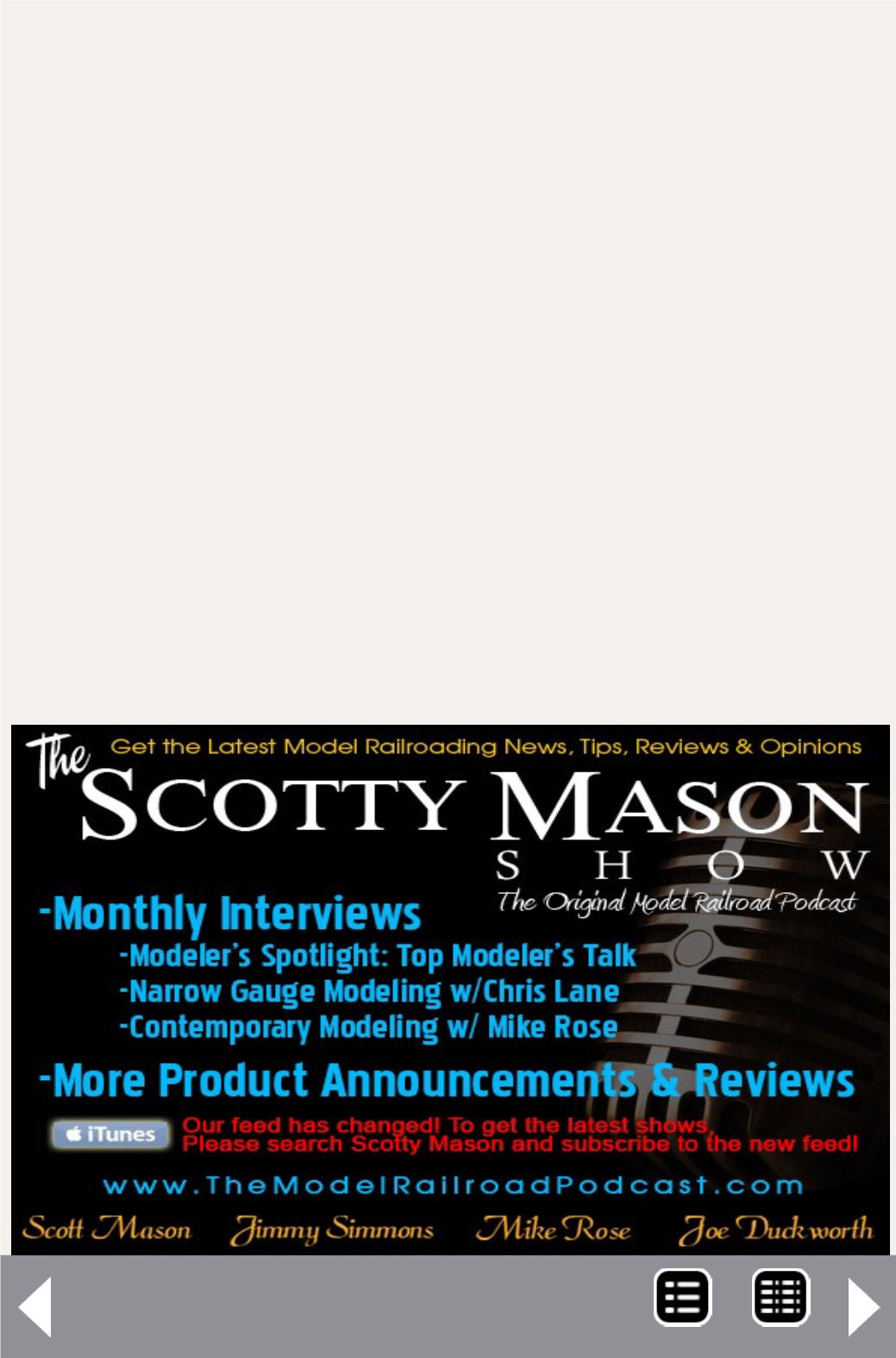
work. The main page of my employee timetable is shown in
Figure 2.
One method of developing a timetable is to graph all the trains
that will run during an operating session so locations and times
of all meets can be determined. That method seemed to me to
be most useful when working with scheduled through or first
class trains instead of locals and other trains which have work
to do along the line. Instead, I needed an approach that would
work with visiting operators and accommodate the switching
each train needed to perform.
I began by running a number of trains at appropriate speeds
between each town or yard and recording how long they took.
I also measured how long it took for each train to perform the
typical switching needed at each location during an operating
session. From this information, I could start building a working
timetable. I used Excel for this task since it was easy to continu-
ally change arrival and departure times at various locations
along the line and to adjust times for the meets.
Getting Real column - 6
MRH-Nov 2014


